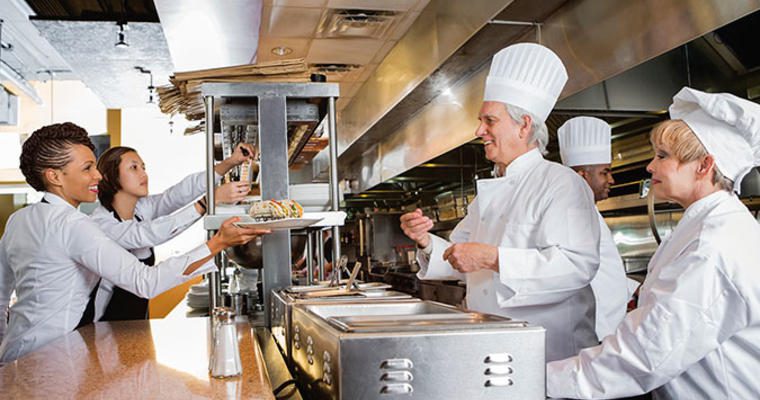Restaurant turnover is a never-ending challenge, and each new hire changes the workplace dynamic. People of different generations and life experiences are constantly coming on board—a teen working his first job, a parent picking up extra income, or a senior staying active in retirement.
Recognizing generational differences not only helps a restaurant manager find people who best fit each job; it also simplifies communication, training, and motivation. In the long term, managing with generational differences in mind leads to satisfied workers and helps retain staff.
With baby boomers (born 1946-65) working later in life and the Gen Z (1993 and after) cohort entering the labor pool, it’s common for restaurant staffs to be a multigenerational melting pot. Gen Z, millennials (1977-92), Gen X (1966-76), and boomers all bring unique skills, experiences, and needs. Helping them blend smoothly is key to a smooth-running operation.
Set aside the stereotypes
Every generation has a reputation: Gen Z is not committed, millennials are selfish, Gen Xers are slackers, boomers are conservative. Some people may fit their generational profile, though ascribed traits are often oversimplified or just plain wrong.
“Every generation has people who lack commitment, act selfish, slack off, or have traditional values,” says Dan Longton, President and CEO of Florida-based TraitSet, a workforce-management service provider. “Employers need to conduct assessments and develop training to make sure everyone fits the operation’s needs and, ultimately, the guests’ needs.”
Avoid stereotypes, Longton suggests, by addressing the differences and values of each generation. Their needs, he says, are largely based on life experiences.
Boomers. Achievement-oriented, they grew up when hard work meant raises, bonuses, or promotion. They thrive on face-to-face communication.
Gen X. These original latchkey kids spent a lot of time fending for themselves, so they value work-life balance. They work well when given direction.
Millennials. They need regular reassurance that they’re valued. In terms of feedback, they need constructive criticism.
Gen Z. Technology immersed and always connected, they like instant feedback, so find a way to include it in their work life.
Sorting through all the players
Start with hiring the right people. To avoid stereotypes, Longton suggests a job search using purely objective data. Online job-search sites such as indeed.com allow employers to evaluate job candidates across generational lines by asking questions that measure work ethic and integrity.
“Once you’re satisfied that you’ve found candidates who will show up for work and be honest, a face-to-face interview about their job skills, strengths, and weaknesses will provide someone who meets your needs.”
In time, Longton notes, restaurants won’t easily find workers from each generation. Between now and 2020, as much as 50 percent of the workforce will consist of millennials and Gen Z.
Motivation that matters
Whatever the generational mix, training and motivating helps everyone perform well together.
At Sunny Street Café in Westerville, Ohio, owner Megan Ada makes sure everyone is aware of the house rules and conducts refresher courses every six months. Shift managers ensure rules are followed and jobs get done.
“I mix younger and older workers on the same shifts,” Ada says. “The younger workers learn from the older workers, and the older workers have more energy when they’re paired with younger workers.”
Ada nurtures a family mood by promoting staff interaction. She closed the restaurant for one day last year and rented a cabin at a state park so the staff could get away for a day. She also has organized a staff kickball tournament, a summer picnic, baby showers, and holiday parties.
Keeping them engaged
Building a good story and having traditions can foster generational harmony and cultivate customer loyalty, says Gordon Food Service Customer Effectiveness Manager Ken Wasco.
Calling on the entire staff to create traditions can be a story in itself. Just ask Crazy Horse Steakhouse & Saloon in Holland, Michigan. More than 15 years ago, customers started pinning dollar bills to the restaurant’s walls—a tradition that has built staff unity. At the end of each month, the staff decides which charity will get the money. Since 2003, Crazy Horse has donated more than $100,000 to charity.
“Staffers of all generations have discovered something in common—the need to be involved in something bigger than themselves,” Wasco explains.
When workers understand generational differences, they work better together, Wasco maintains. All employees are of value to the operation; otherwise, they wouldn’t have been hired at all. You don’t want to lose any of them to turnover because replacing workers is very expensive and time-consuming.
“Remember, all foodservice jobs are real jobs—potential career positions,” Wasco says. “Each employee’s degree of success is a direct result of the people skills managers help them develop.”
Managing each generation requires getting to know each generation, he concludes. And that is an investment in their future and a restaurant’s success.




























